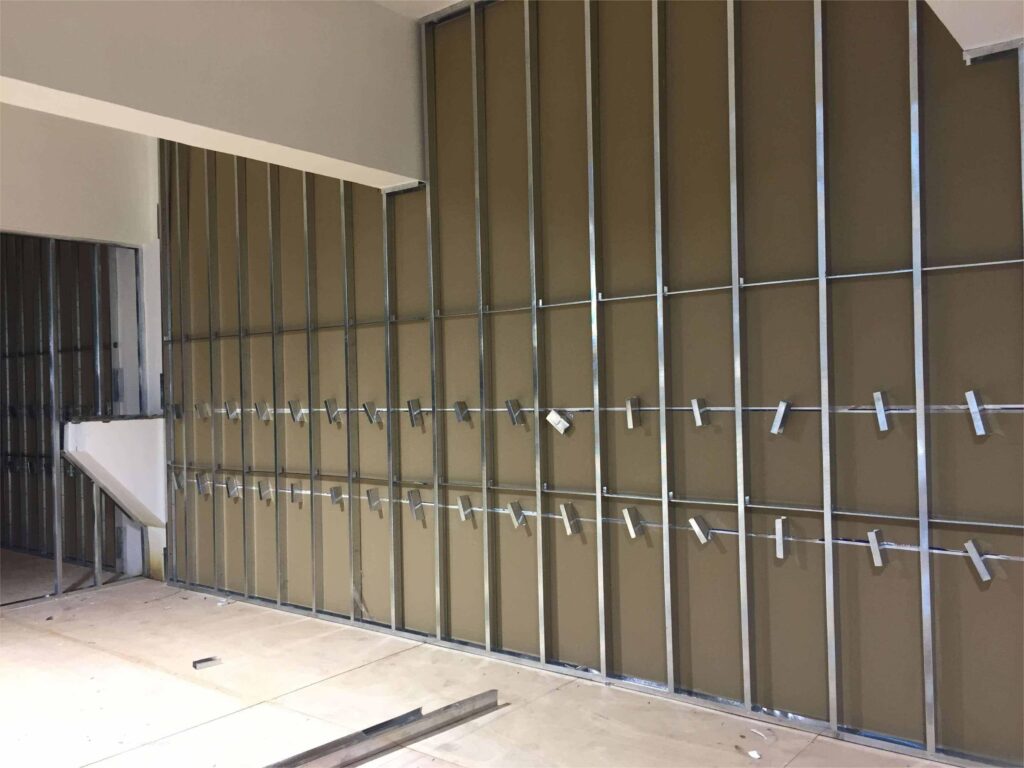
Maintaining drywall steel profile partitions requires understanding the process and potential issues. We will outline these essentials for a successful installation.
First, it is crucial to select the appropriate drywall steel profile and determine its placement. Considerations such as windows, doors, and light switches are essential for seamless integration.
Secondly, buy the necessary tools and materials. A rubber pad is recommended for a flat steel surface.
Third, ensure that the drywall steel profile is securely attached to the wall, including the bottom, middle, and top plates. Consistent gaps between plates are essential.
Fourth, execute the partition wall installation accurately. It should be firm, flat, and show uniform gaps.
Post-partition door and window installation, ensure they are firm, flat, and show uniform gaps.
Drywall steel partition installation requires meticulous and specialized equipment and components. If you are unsure, consult an experienced drywall installation company.
Understand the partitioning process of drywall steel profiles. The industry typically categorizes this process into several stages. First, measure and evaluate space. Next, prioritize partition wall designs and drawings. This ensures accuracy and determines wall lengths and positions. Finally, determine the size and quantity of installation materials based on wall dimensions, positions, and functions.
The drywall steel profile gypsum board partition installation includes these steps: preparing a wall layout, constructing wall cushions, installing the wall at ground level, securing the wall along top tracks, installing vertical studs for support, installing door and window frames, adding gypsum board, and applying joint treatment and wall decoration.
Drywall steel profile gypsum panel partitions offer significant benefits:
First, superior strength guarantees durability. Built from superior materials, they outperform conventional walls. Therefore, they are ideal for demanding strength applications.
Secondly, installation efficiency simplifies the process. Drywall steel profile gypsum boards are easy to cut and install, facilitating efficient construction. Therefore, they are suitable for quick, seamless wall installation.
Third, inherent fire resistance enhances safety. Drywall steel profile gypsum board is fireproof, protecting people and assets. Therefore, they are a prime choice for fireproof walls.
Finally, cost-effectiveness delivers value. Drywall steel profile gypsum board is a more economical alternative to other wall materials, resulting in lower installation costs. Therefore, they are an ideal choice for cost-sensitive projects.
- Wall Position Overview: The wall position designed must be marked on the ground, covering the ceiling and side wall boundaries.
- Constructing a wall requires cleaning, and treating wall tiles and floor contact areas. Subsequently, concrete is poured to form a flat wall.
- Studs are installed along the tracks, using nail screws at a distance of 900mm. Avoid buried pipes.
- During vertical stud installation, adherence to designated spacing is crucial. This involves marking lines on the ground and top track. Align the studs from the wall edge. For partition walls with doors and windows, align them adjacent to the doors/windows. If the final stud exceeds the required spacing, an additional stud is required. Fasten the upper and lower ends of the stud to the top and ground track using rivets or self-tapping screws.
- Secure the door and window frame in place, connecting it to vertical studs along the ground and top rail. Wooden doors and frames can be fastened with wood screws, while steel and aluminum alloy doors can be secured with self-tapping screws.
- Ensure that the plasterboard is installed vertically, with seams on both sides of the drywall steel profile. Gypsum board and drywall steel profile can be fixed with self-tapping screws. For a 12mm thick plasterboard, use a long 25mm tapping screw. For two layers of 12mm thick plasterboard, use a long 35mm tapping screw. The tapping screw should be at least 10mm on the edge of the paper-covered board and at least 15mm on the edge of the cut-out board. The screw cap should be buried in the board without damaging the paper. The self-tapping screw distance around the plate should be 250 mm, with the middle of the plate at 300 mm.
- Joints: The vertical and horizontal joints of the partition wall (including those between the gypsum board and the ceiling, and the sidewall) must be embedded and pasted with joint tape.
To install steel profile drywall partitions, purchase the necessary equipment and materials including stud finders, drywall cutters, tape, joint compound, mud pan, adhesive, fasteners, support brackets, angle and bracket supports, connectors, and accessories. Recognize their critical role in a successful installation.
- Install top and bottom tracks as per instructions.
- Establish vertical studs, and fortify door frame components with steel profile.
- A transverse steel profile should be installed transversely.
- Accessories include support brackets, angle and bracket supports, connectors, and fixtures critical to installation.
- Secure top and bottom tracks against elastic line position with nails or expansion bolts, max. 600 mm apart.
- Secure the wall to the wall with nails, expansion bolts, or wood screws, up to 900 mm apart.
- Grading the middle vertical stud according to the width of the cover face plate. The stud width should not exceed 1/2 plate, gap (typically 5mm) should not exceed 600mm. Both ends of the stud should be nailed.
- Connect longitudinal and transverse partition walls, including the vertical stud in the joint.
- Attach the transverse steel profile with a support bracket, support bracket, and connecting piece. Rivets are acceptable for fixing, but welding is prohibited.
- The distance between transverse steel profiles should not exceed 1200mm.
- A drywall steel profile must be installed on the cover panel joint.
- The drywall steel profile should not be cut or reduced in cross-section.
- Note: The connection between the transverse steel profile and the support bracket requires welding. A core-pulling rivet can be used for temporary construction, but it must be welded before handover.

